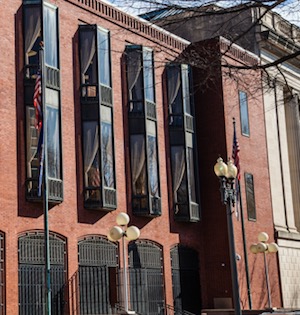Patent Claims Directed to Oil-and-Gas Drilling Systems Upheld as Patent Eligible | Akin Gump Strauss Hauer & Feld LLP
A court in the District of Colorado recently denied dismissal of patent infringement claims, holding that the asserted claims directed to plunger lift systems for cultivating natural gas from an oil-and-gas well are patent eligible under 35 U.S.C. § 101. The court held that the method claims did not recite an abstract idea because the claims are directed to an intended result, and they concretely identify the physical structures or steps that provide the specific means of accomplishing the result.
Well Master Corp. v. Flowco Production Solutions, LLC, No. 21-cv-2145 (D. Colo.).
Patent owner Well Master sued Flowco for infringing three patents. Flowco moved to dismiss two of the patents for patent ineligibility under § 101—U.S. Patent Nos. 7,395,865 and 7,793,728. The court found that the asserted independent claims were representative of the dependent claims because Well Master took no position on representativeness. The patents are directed to plunger lift systems or “plungers.” A plunger is a cylindrical device placed inside the chamber or “tubing” of an oil-and-gas well for cultivating natural gas.
The court analyzed eligibility using the Supreme Court’s two-step Alice framework. In step one, the court determines whether the claims, in their entirety, are “directed to a patent-ineligible concept,” such as an abstract idea. Alice Corp. v. CLS Bank Int’l, 573 U.S. 208, 217 (2014). If they are, the court proceeds to step two—the search for an “inventive concept”—and considers “the elements of each claim both individually and ‘as an ordered combination’ to determine whether the additional elements ‘transform the nature of the claim’ into a patent-eligible application.” Id. (citing Mayo Collaborative Servs. v. Prometheus Lab’ys, Inc., 566 U.S. 66, 78-79 (2012)).
Representative claims 7 and 12 of the ʼ865 patent recite a method of controlling fluid flow in a tubing string in a plunger lift system, including a plunger with fins, a bore and side holes extending from the bore to the side walls. Claim 7 states that the fins create turbulence within the tubing string and the method recites rotating the plunger. The claim does not expressly recite a causal relationship between the fins and the rotation, but the court noted that the specification states that the rotation is caused by the combined interaction of the fins, bore, and side holes. Claim 12 recites the same subject matter, except it attributes turbulence to the side-hole-and-bore combination rather than the fins.
Addressing Alice step one, the court quoted from ChargePoint, Inc. v. SemaConnect, Inc., 920 F.3d 759 (Fed. Cir. 2019), to emphasize that this step considers the “focus of the claimed advance over the prior art to determine if the claim’s character as a whole is directed to excluded subject matter.” The court found that claims 7 and 12 are not directed to an abstract idea (i.e., “rotation”) alone, and instead are directed to the generation of turbulence. The court relied on the specification, which explains that rotation occurs to due the fins, bore, and side walls. The court noted that, like the claimed features in McRo, Inc. v. Bandai Namco Games America, Inc., 837 F.3d 1299 (Fed. Cir. 2015), these features (the fins, bore and side walls) provide the means that improves the relevant technology. The court also relied on the claim preambles, which specify the intended result—“controlling fluid flow in a tubing string.”
The patent owner argued that the claims are directed to “rotation” because the prior art eliminates other elements such that rotation is all that remains. The court determined, however, that reducing the claims to rotation would be improperly “oversimplify[ing] key inventive concepts [and] downplay[ing] an invention’s benefits.” The court distinguished American Axle & Manufacturing, Inc. v. Neapco Holdings, LLC, 967 F.3d 1285 (Fed. Cir. 2020), in which the claims invoked “a natural law, and nothing more, to achieve a claimed result.” In contrast, the court found that the claims of the ʼ865 patent are “directed to generating turbulence” and “concretely identify the physical structures—the gas holes and fins—that provide the specific means of accomplishing that result.”
The court also addressed a third representative claim—claim 16, which described a method of cleaning the well tubing string while generating turbulence. Following a similar analysis as before, the court found that the claim recited the “physical structure or steps” necessary to accomplish cleaning, i.e.: “(1) carve fins with sharpened edges into the plunger base, core the plunger by adding a bore, and drill holes through the side walls that reach the bore; (2) allow the plunger to rotate; and (3) allow the rotating plunger’s fins to scrape along the tubing string.” The court again rejected patent owner’s attempt to dissect the claim limitations using citations to prior art.
The court determined that the claims of the ʼ728 patent are identical to their counterparts in the ʼ865 patent, and thus, those claims are not directed to an abstract idea for the same reasons. Because none of the asserted claims are directed to an abstract idea, the court found no reason to consider Alice step two.
Practice Tip: Patent owners should avoid claiming a result and instead claim a specific means for achieving the result. If the preamble recites an intended result, patent owners should confirm that the body of the claim recites a specific means for accomplishing that result. When claiming industrial processes, the body of the claim should concretely identify the physical structures or steps that provide the means for accomplishing an intended result. When claims are challenged, patent owners should also insist on consideration of the focus of the claimed advance over the prior art to determine if the claim’s character, as a whole, is directed to excluded subject matter and avoid oversimplifying key inventive concepts or downplaying an invention’s benefits.






